Boat Battery Buying Guide for a Reliable Power Source
Welcome to my comprehensive boat battery buying guide. As an expert in the field, I will provide you with valuable insights and tips on how to choose the right boat battery for your specific needs.
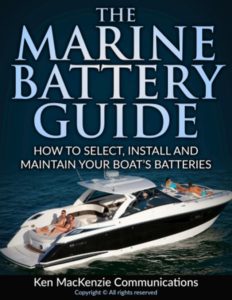
Having a reliable power source is crucial for a smooth boating experience. Whether you’re planning a day trip or a long adventure on the water, a high-quality battery is essential.
With so many options available, selecting the right one can be overwhelming. That’s why I’ve put together this boat battery buying guide to help you make an informed decision.
Boat Battery Buying Guide – Key Takeaways:
- Choosing the right boat battery is essential for optimal performance and a smooth boating experience.
- Consider factors such as battery type, capacity, and maintenance requirements when making your selection.
- Proper maintenance can significantly extend the lifespan of your battery.
- Matching the battery to your boat’s electrical system is crucial.
- The size and weight of the battery can impact installation and boat balance.
Factors to Consider When Choosing a Boat Battery
Choosing the right boat battery is an essential step in ensuring optimal performance for your boat. Here are some key factors to consider:
Battery Type
The first factor to consider when choosing a boat battery is the type. There are three main types of boat batteries: lead-acid, AGM, and lithium-ion. Each type has its own advantages and disadvantages, so it’s important to select the one that best suits your needs and preferences.
| Battery Type | Advantages | Disadvantages |
|---|---|---|
| Lead-Acid | Low cost, readily available | Requires maintenance, can’t discharge below 50% |
| AGM | No maintenance, can’t spill, can discharge deeply | More expensive, heavier |
| Lithium-Ion | Lightweight, long lifespan, can discharge deeply | Expensive, requires special charging conditions |
As shown in the table, each type of battery has its pros and cons. Lead-acid is great for those on a budget, while AGM is a solid choice for boaters who don’t want to deal with maintenance. Lithium-ion is the most expensive option but offers the longest lifespan and can discharge deeply.
Battery Capacity
Another key factor is battery capacity, which is measured in amp-hours (Ah). The capacity you need depends on your boating activities and the electrical devices you plan to power. As a general rule, it’s best to choose a battery with a higher capacity than you think you’ll need to avoid running out of power. Keep in mind that certain devices, such as refrigerators and air conditioning units, require a higher capacity battery to run for extended periods.
Maintenance Requirements
The maintenance requirements of a battery should also be considered. Lead-acid batteries require regular maintenance, such as checking the water level and adding water as needed. AGM batteries, on the other hand, require no maintenance and are sealed. Lithium-ion batteries have the lowest maintenance requirements, although they require specialized charging conditions.
Compatibility
Ensure that the battery you choose is compatible with your boat’s electrical system. Check the voltage requirements and ensure that the battery can meet them. Also, consider the reserve capacity, which measures the number of minutes a battery can sustain a load of 25 amps before dropping below 10.5 volts. A higher reserve capacity is generally better.
Size and Weight
The size and weight of the battery can also impact its installation and handling. Consider the available space in your boat and select a battery that fits comfortably. If your boat has a low weight capacity, consider a lighter battery to avoid affecting the balance of the boat.
It’s essential to choose the best boat battery for your needs to ensure optimal performance. By considering factors such as battery type, capacity, maintenance requirements, and compatibility, you can select a reliable and efficient power source for your boat.
Different Types of Boat Batteries
Choosing the right boat battery depends on various factors such as type, capacity, and maintenance. Boat batteries come in different types, including lead-acid, AGM, and lithium-ion. Each type has its own features and benefits, making it essential to understand which one is best for your needs.
Lead-Acid Batteries
Lead-acid batteries are the most traditional type of marine battery, known for their affordability and durability. They have a low self-discharge rate and a long lifespan, making them an excellent choice for boaters looking for a reliable and cost-effective option. However, they are relatively heavy, require periodic maintenance, and are not maintenance-free.
AGM Batteries
AGM (absorbed glass mat) batteries are a type of sealed lead-acid battery that requires no maintenance. They have a higher power density than traditional lead-acid batteries, providing more power per pound of weight. AGM batteries are an excellent choice for boats with limited space and high power demands. They are also suitable for boaters who prefer maintenance-free batteries.
Lithium-ion Batteries
Lithium-ion batteries are becoming increasingly popular due to their high power density, low weight, and longer lifespan. They can provide more power per pound of weight than lead-acid batteries and have a higher charge acceptance rate. Lithium-ion batteries are an excellent choice for boaters looking for a lightweight and high-performance option. However, they are more expensive than other types of batteries.
| Type of Battery | Pros | Cons |
|---|---|---|
| Lead-Acid | Affordable, durable, low self-discharge rate, long lifespan | Relatively heavy, requires periodic maintenance, not maintenance-free |
| AGM | Sealed, maintenance-free, higher power density than lead-acid | Higher cost than lead-acid |
| Lithium-ion | High power density, low weight, longer lifespan | More expensive than other types of batteries |
When choosing the best boat battery for your needs, it’s important to consider the features of each type. If you’re looking for an affordable and durable option, a lead-acid battery may be the best choice. If you prefer a maintenance-free battery with a higher power density, an AGM battery may be the way to go. If you need a lightweight and high-performance battery, a lithium-ion battery may be the ideal choice.
Understanding Battery Capacity and Performance
When it comes to choosing the right boat battery, it’s crucial to consider the battery’s capacity and performance. Battery capacity refers to the amount of electrical energy the battery contains, while performance refers to the battery’s ability to deliver this energy efficiently and reliably over time.
Before selecting a boat battery, it’s important to determine the amount of power you’ll need based on your boat’s electrical requirements. This will help you calculate the minimum battery capacity you’ll need to ensure reliable power on the water.
One way to determine the battery capacity required for your boat is to use the following formula:
AH (amp-hours) = watts/volts x hours
This formula can help you calculate the number of amp-hours needed to power your boat’s electrical devices for a specific amount of time. By determining the amp-hour capacity required, you can choose a battery with sufficient capacity to meet your needs.
In addition to capacity, it’s also important to consider a battery’s performance. Factors that can affect battery performance include temperature, discharge rate, and depth of discharge. Choosing a battery with a high discharge rate and deep discharge capabilities can ensure that your battery delivers reliable performance even under heavy loads.
Another factor to consider is the battery’s reserve capacity, which refers to the amount of time the battery can deliver a specified level of power before it’s fully discharged. Higher reserve capacity can provide a safety net in case of unexpected power needs, making it an important consideration for boaters.
When choosing a boat battery, it’s important to select a battery that meets the capacity and performance requirements of your specific boating needs. By understanding these factors and determining your power needs, you can choose a battery that will provide reliable power and optimal performance on the water.
Boat Battery Buying Guide – Maintenance Tips
Proper maintenance is crucial for extending the lifespan of your boat battery. Here are some essential maintenance tips to keep your battery in optimal condition:
- Charge your battery regularly: Regular charging helps prevent sulfation and extends battery life. Charge your boat battery after every use, and for extended periods of storage, charge your battery every 30 to 45 days.
- Check the water level: If you have a lead-acid battery, check the water level regularly and refill with distilled water as needed. Ensure that the battery plates are fully submerged in the water.
- Store your battery correctly: Store your battery in a cool, dry place away from direct sunlight and moisture. Ensure that your battery is fully charged before storage.
- Clean your battery: Clean the terminals and connections regularly to prevent corrosion. Use a wire brush or sandpaper to remove any buildup and apply a terminal protectant to prevent future corrosion.
- Inspect for damage: Check your battery for signs of damage, such as bulges, cracks, or leaks. If you notice any damage, replace your battery immediately.
Following these maintenance tips will help extend the life of your boat battery and ensure reliable power when you need it. With proper maintenance, you can increase your battery’s lifespan by up to 50%.
Selecting the Right Battery for Your Boat’s Electrical System
Choosing the right battery for your boat’s electrical system is crucial for optimal performance. When selecting a boat battery, consider the following battery selection tips:
- Voltage requirements: Ensure you choose a battery with the correct voltage to match your boat’s electrical system.
- Compatibility: Make sure the battery type is compatible with your boat’s charging system. For example, some boats may require a deep-cycle battery, while others may need a starter battery.
- Reserve capacity: This refers to the length of time the battery can continuously discharge a specific amount of current before needing a recharge. Consider how long you’ll be boating for and how much power you’ll need in reserve.
When selecting the best boat battery for your needs, it’s crucial to consider your specific boating activities. If you plan to run electronics or appliances that require a steady power source, a deep-cycle battery may be the best choice. On the other hand, if your primary usage involves starting the boat’s engine, a starter battery may be more suitable.
It’s also important to remember that the type of battery you choose will impact its overall lifespan and performance. By choosing a high-quality boat battery and following proper maintenance tips, you can ensure your battery provides reliable power for years to come.
“Choosing the right battery for your boat’s electrical system is crucial for optimal performance.”
Choosing the Right Battery Size and Weight
Before selecting a boat battery, it’s essential to determine the right size and weight. The size and weight of the battery can impact its installation, handling, and overall boat balance.
First, consider the available space on your boat and ensure that the battery fits comfortably and securely. You can check your boat’s specifications to ensure that the battery size and weight are within the recommended range.
Next, consider the weight of the battery. A heavy battery can affect your boat’s balance, stability, and performance. If your boat has a small engine or is used primarily for recreational purposes, a lighter battery may be more suitable.
Additionally, consider the battery’s shape and design. Some batteries may have unique shapes that allow for easier installation or better space utilization.
Choosing the right size and weight for your boat’s battery is crucial for optimal performance and safety. Be sure to consider the factors mentioned above and consult with a professional if needed
Considerations for Boat Battery Buying Guide in the US Sun
If you are boating in the United States, you need to consider the harsh weather conditions, high temperatures, and prolonged sun exposure that come with the territory. These factors can have a significant impact on your boat battery, so it’s important to choose the right one for your needs.
Battery Type
When boating in the US sun, it’s important to choose a battery that can handle high temperatures. AGM (Absorbed Glass Mat) batteries, for example, are a popular choice for their ability to withstand extreme temperatures better than other types. They are also maintenance-free and resistant to spills, making them a safe option for boaters.
Cold Cranking Amps (CCA)
Cold Cranking Amps (CCA) is a measure of the battery’s ability to start the engine in cold temperatures. When boating in the US sun, the battery might experience extreme temperature shifts, so it’s important to choose a battery with a high CCA rating. This ensures that your boat starts smoothly when you need it to.
Battery Capacity
When boating in the US sun, you need a battery with a high enough capacity to power all your electrical equipment. This includes items like navigation equipment, fish finders, and radios. Consider the amount of time you spend on the water and the amount of electrical equipment you use. Select a battery that has sufficient capacity to meet your needs.
Battery Size and Weight
The size and weight of your boat battery can impact the balance of your boat. When boating in the US sun, it’s important to choose a battery that fits in the available space and doesn’t add unnecessary weight to your boat. Consider the weight and size of the battery to ensure that it won’t affect performance or safety while boating.
By following these considerations, you can choose the best boat battery for your needs when boating in the United States. A high-quality battery will ensure that your boat functions optimally, providing you with a safe and enjoyable experience on the water.
Conclusion: Choosing the Best Boat Battery for Your Needs
As a boat owner, choosing the right battery is key to ensuring a safe and enjoyable experience on the water. This boat battery buying guide has provided you with a comprehensive understanding of the key factors to consider when selecting a battery, including battery type, capacity, performance, maintenance, and compatibility.
Boat Battery Selection Tips:
When selecting a boat battery, it is essential to choose one that meets your specific needs. To make the best decision, consider the type of battery that is most suitable for your boat, the required capacity, and maintenance demands. Assess the compatibility of your electrical system and strive to find a battery that fits your available space.
Boat Battery Maintenance Tips:
Proper maintenance is crucial for prolonging the lifespan of your boat battery. To ensure optimal performance, clean your battery regularly, charge it using a suitable charger, and store it correctly when not in use. Regular inspection of your boat battery can also help you detect any issues early on, allowing you to undertake corrective actions as required.
Boat Battery Lifespan and Performance:
Maximizing the lifespan and performance of your boat battery requires you to follow the right charging procedures, avoid overloading the battery, and minimize unnecessary usage. Consider investing in a high-quality battery that can provide optimal performance even in extreme conditions.
This comprehensive boat battery buying guide has provided valuable insights into the factors to consider when selecting a battery that meets your needs. Remember, choosing a battery that is compatible with your boat’s electrical system and usage demands is essential for a reliable power source on the water.
Now that you have a better understanding of boat batteries and what to consider when selecting one, you can confidently make an informed decision. By following the maintenance tips provided in this guide, you can also extend the lifespan of your battery, ensuring a reliable power supply throughout your boating adventures.
FAQ about Boat Battery Buying Guide
How do I choose the right boat battery?
Choosing the right boat battery involves considering factors such as battery type, capacity, maintenance requirements, and compatibility with your boat’s electrical system. This comprehensive guide provides expert advice to help you make an informed decision.
What factors should I consider when choosing a boat battery?
Factors to consider when choosing a boat battery include battery type, capacity, maintenance requirements, voltage requirements, compatibility with your boat’s electrical system, and the size and weight of the battery.
What are the different types of boat batteries?
Boat batteries come in various types, including lead-acid, AGM (absorbent glass mat), and lithium-ion batteries. Each type has its own advantages and disadvantages, which are discussed in this guide to help you make an informed decision.
How do I understand battery capacity and performance?
Understanding battery capacity involves determining the battery’s ampere-hour (AH) rating and considering your boating activities. Maximizing battery performance requires proper charging, maintenance, and usage practices. This guide provides insights into both these aspects.
What maintenance tips should I follow for boat batteries?
Proper maintenance is crucial for extending the lifespan of your boat battery. This section covers essential maintenance tips, including charging procedures, cleaning, and storage guidelines.
How do I select the right battery for my boat’s electrical system?
Selecting the right battery for your boat’s electrical system involves considering factors such as voltage requirements, compatibility, and reserve capacity. This section provides insights to help you choose the best battery for your specific needs.
How do I choose the right battery size and weight?
The size and weight of a boat battery can impact its installation, handling, and overall boat balance. This section discusses how to determine the appropriate battery size and weight based on your boat’s specifications and available space.
What should I consider for boating in the US sun?
Boating in the United States sun presents specific challenges. This section provides considerations for choosing a boat battery that can withstand harsh weather conditions, high temperatures, and prolonged sun exposure.
What is the conclusion of this boat battery buying guide?
Choosing the right boat battery is essential for a smooth and enjoyable boating experience. By considering the factors discussed in this guide, you can confidently select a battery that meets your needs, maximizes performance, and ensures reliable power on the water. Following the maintenance tips provided will help extend the lifespan of your battery.
Boat Maintenance and Service Schedule is Critical
MarineBatteryGuide.com is a participant in the Amazon Services LLC Associates Program, an affiliate advertising program designed to provide a means for sites to earn advertising fees by advertising and linking to Amazon.com,
Links on this boat battery buying guide page are sponsored affiliate links and the owner makes commission if you buy after clicking these links. The owner is not a bona-fide user of the boat battery buying guide. However, he has thoroughly researched the boat battery buying guide and provided a personal opinion only. This disclosure is in accordance with the Federal Trade Commission’s 16 CFR, Part 255: “Guides Concerning the Use of Endorsements and Testimonials in Advertising.”

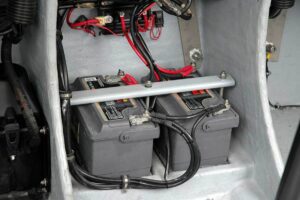 It is important to ensure that you have adequate capacity in the battery for the amount of power your application will use (known as Amp Hours). The following battery calculation sheet guide is a great place to start.
It is important to ensure that you have adequate capacity in the battery for the amount of power your application will use (known as Amp Hours). The following battery calculation sheet guide is a great place to start.
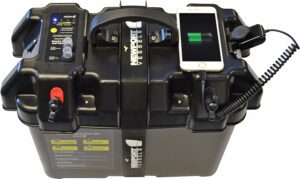
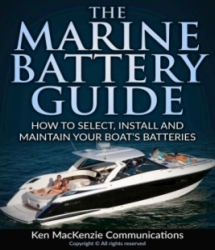 Monitoring boat battery voltage is crucial for identifying potential issues before they become major problems. By following these suggestions, you can ensure the functionality and lifespan of your boat’s electrical system, keeping you safe and prepared during your boating adventures.
Monitoring boat battery voltage is crucial for identifying potential issues before they become major problems. By following these suggestions, you can ensure the functionality and lifespan of your boat’s electrical system, keeping you safe and prepared during your boating adventures.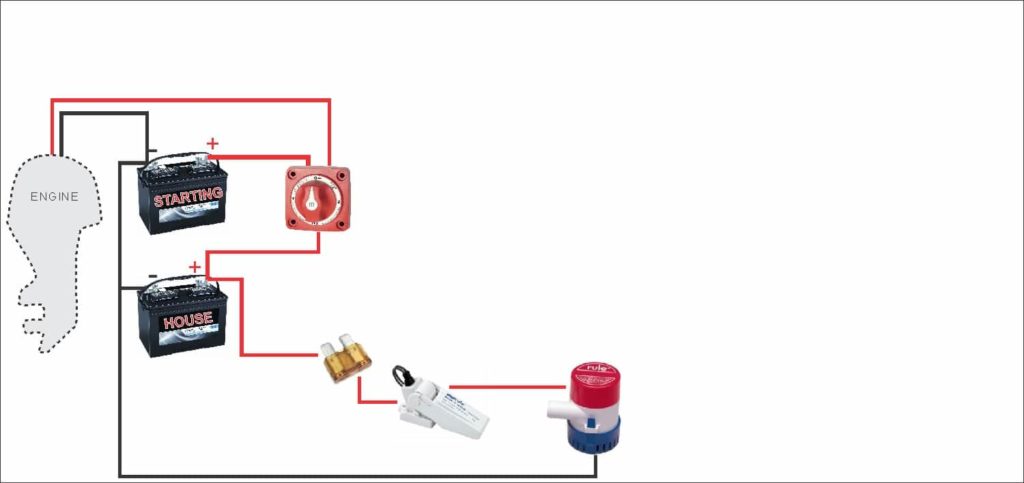 Whether you’re a beginner or have some knowledge of boat electrical systems, this guide will equip you with the knowledge you need to successfully wire your boat’s batteries. From understanding the basics of boat battery wiring to following a step-by-step guide, I will cover everything you need to know to ensure a safe and efficient electrical system on your boat.
Whether you’re a beginner or have some knowledge of boat electrical systems, this guide will equip you with the knowledge you need to successfully wire your boat’s batteries. From understanding the basics of boat battery wiring to following a step-by-step guide, I will cover everything you need to know to ensure a safe and efficient electrical system on your boat.